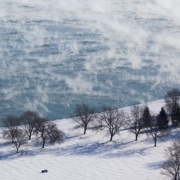AccuWeather meteorologists are available 24/7 to provide further insights and updates on evolving weather conditions. Please contact pr@accuweather.com during regular business hours, or support@accuweather.com or call AccuWeather’s Media Hotline at (814)-235-8710 at any time to arrange interviews with AccuWeather experts or to request the most updated graphics for print or broadcast.
Extreme flooding risk increasing in the next 72 hours; Debby forecast to make a second landfall in South Carolina
August 6, 2024
|
> A widespread flooding disaster is possible near the Southeast coast as Debby crawls north
|
|||
AccuWeather Global Weather Center – August 6, 2024
An extreme risk to lives and property from widespread flooding is expanding across theSoutheast this week before Debby makes a second landfall in theCarolinas and then quickly shifts to the Northeast.
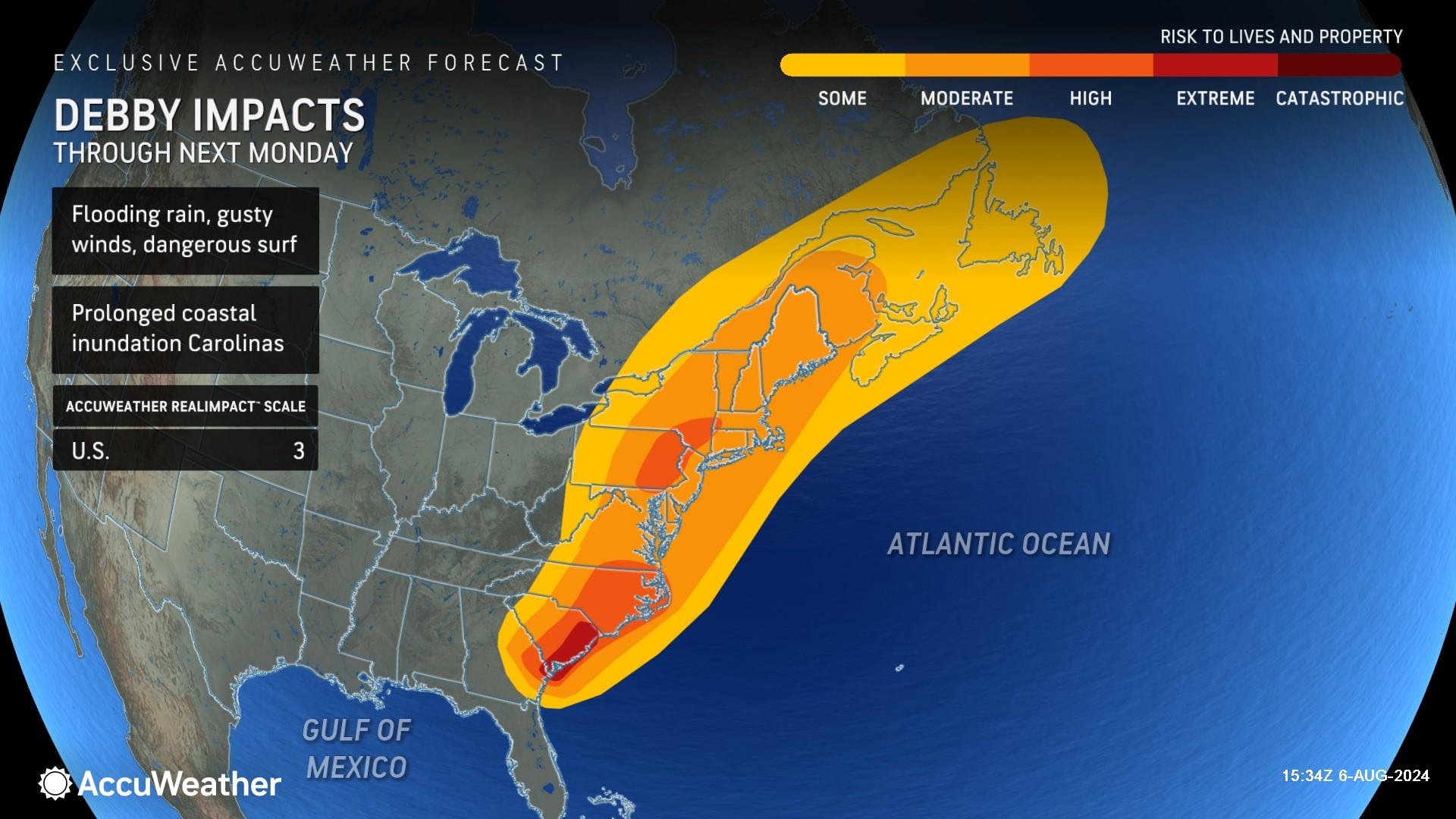
“Debby will be recognized as the next billion-dollar weather disaster in theUnited States,” said AccuWeather Chief Meteorologist Jon Porter. “We do not forecast an extreme risk to lives and property from flooding very often. Flooding disasters are possible in multiple communities this week. People need to be prepared for potentially catastrophic flooding. When all is said anddone, in fact, there could be tens of billions of dollars in total damage andeconomic impact from Debby.”
Debby has slowed to a crawl along the southeast U.S. and is expected to produce up to 2 feet or more of rainfall in parts of Georgia and South Carolina. The AccuWeather Local StormMax™ is 32 inches near the South Carolina shoreline, where there is the potential for the storm to slow down or stall. Should this occur, flooding could be significant, life-threatening, and historic.
“Debby has been meandering at a snail’s pace, but it will blast to the northeast like a rocket later this week,” said AccuWeather Chief On-Air Meteorologist Bernie Rayno.
Porter says the flooding risk extends more than 100 miles inland from thecoastline across much of the Southeast this week.
“If there is heavy rain inland across the Carolinas, that water will eventually enter rivers and other waterways that flow toward the coast,” explained Porter. “Water flowing from the ocean back toward the coast, coupled with thepersistent onshore flow, can back up the rivers because they won't be able to drain, further amplifying what can already be major flooding concerns along and near the coastal areas.”
AccuWeather Lead Hurricane Expert Alex DaSilva says Debby will unleash not only heavy rainfall in the Southeast, along with a risk of tornadoes, dangerous storm surge, a rip current risk, and extensive beach erosion. Portions of beaches from Georgia through the Carolinas could be washed away. Across this area, 3-6 feet of storm surge is expected with a small area expected to have 6-10 feet of storm surge.
“Debby is in an area with very weak steering winds. The storm has essentially hit the brakes and is moving at just a few miles per hour,” explained DaSilva. “We have two areas of high pressure. One over the Plains of the United States, and the Bermuda High to the east. Both are essentially pushing Debby. The Bermuda high is winning right now and keeping Debby onshore over land. We expect the area of high pressure over the Plains will eventually win out and push Debby out over the Atlantic. Debby may strengthen a bit before an upper-level low to the southeast approaches underneath Debby, pushing the storm to the north. Debby will then be picked up by a dip in the jet stream, which will pull the storm up toward the northeast.”
DaSilva said Debby is expected to make a second landfall along the coast of South Carolina Thursday.
Wind gusts of 60-80 mph may occur along the Carolina coasts, which could bring down trees and power lines and cause some structural damage.
AccuWeather expert meteorologists say Debby will continue to create major travel and business disruptions. AccuWeather is forecasting 1,000 flight cancellations Wednesday and Thursday, and 1,200 flight cancellations on Friday.
Debby is a 3 on the AccuWeather RealImpact™ Scale for Hurricanes in theUnited States due to dangerous storm surge, life-threatening flooding rain, and strong winds. It is still possible that Debby might need to be rated higher than a 3 on the RealImpact™ Scale. This would only occur if the floodingpotential across the Southeast escalates further.
“There’s a big difference between Debby being a tropical storm on the Saffir-Simpson Hurricane Wind Scale, and a 3 on the AccuWeather RealImpact Scale for Hurricanes. The reason we created this scale is to raise public awareness and relay the urgency of flooding threats and other impacts that are not included in the Saffir-Simpson Hurricane Wind Scale,” explained Porter. “We’ve seen so many cases in the past where people were unprepared or did not clearly understand the risks from a slow-moving, big rain producer like Debby.”
Flooding threat shifts to the mid-Atlantic and Northeast
After unleashing potentially historical rainfall totals in the Southeast, DaSilva said Debby will eventually shift directions toward the Northeast later thisweek.
“Debby has been crawling at just a few miles an hour, but the storm will eventually speed off to the northeast at the end of the week. Debby will bring the risk of heavy rainfall and flooding to parts of the mid-Atlantic, Northeast, and Atlantic Canada by the weekend,” said DaSilva. “Areas in the Northeast have dealt with a lot of rain in recent weeks, and there’s more rain on theway.”
Rounds of heavy rain will expand from central Virginia to eastern Maine. Rainfall totals of an inch or more are expected across most of Virginia, Pennsylvania, New York, and most of New England. Within this area, 2-4 inches of rain is expected from much of Virginia northward into the eastern half of Pennsylvania and New York state northeastward to central Maine, including cities along I-95 corridor, which can lead to significant flooding. Four to 8 inches of rain can fall within this area from southeastern Virginia northward into central and eastern New Jersey and can lead to significant flooding. This rain will fall on top of already saturated ground due to rain earlier this week not related to Debby. The AccuWeather Local StormMax™ for the northeastern U.S. is 12 inches.
AccuWeather Senior Meteorologist Alex Sosnowski says rainfall rates of 2-4 inches per hour across the Northeast are possible Friday and Saturday, significantly increasing the risk of flash flooding and urban flooding.
“After the rounds of rain across the Northeast over the last week, the ground will be saturated in some areas. There is the potential for urban flooding andtravel delays, and perhaps more serious widespread flooding as Debby shifts up the coast,” said Sosnowski.
Explosive hurricane season ahead
AccuWeather expert meteorologists are closely monitoring a new potential tropical threat across the Caribbean that has a medium risk of developing later this week, which could evolve into a tropical rainstorm or a tropical storm this weekend in the Gulf of Mexico.
In March, AccuWeather warned of an “explosive” hurricane season in theAccuWeather 2024 U.S. Hurricane Forecast.
AccuWeather predicts 20-25 named storms and four to six direct impacts to the United States this year.
Hurricane Beryl shattered records last month before slamming into the Texas coast, leaving millions of people without power. AccuWeather issued preliminary estimate of the total damage and economic loss from Hurricane Beryl in the United States at $28-32 billion.
AccuWeather Forecast Graphics
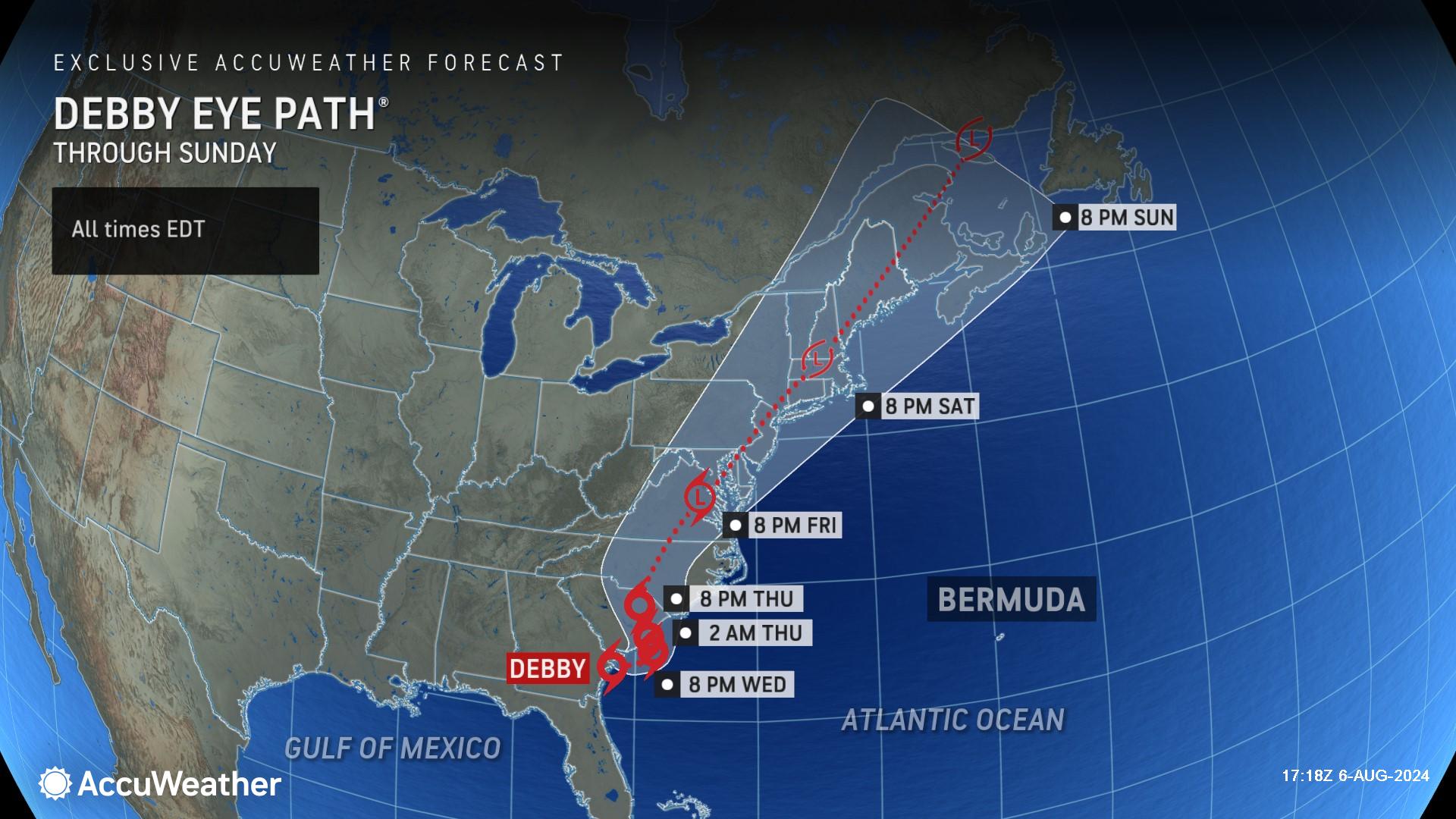
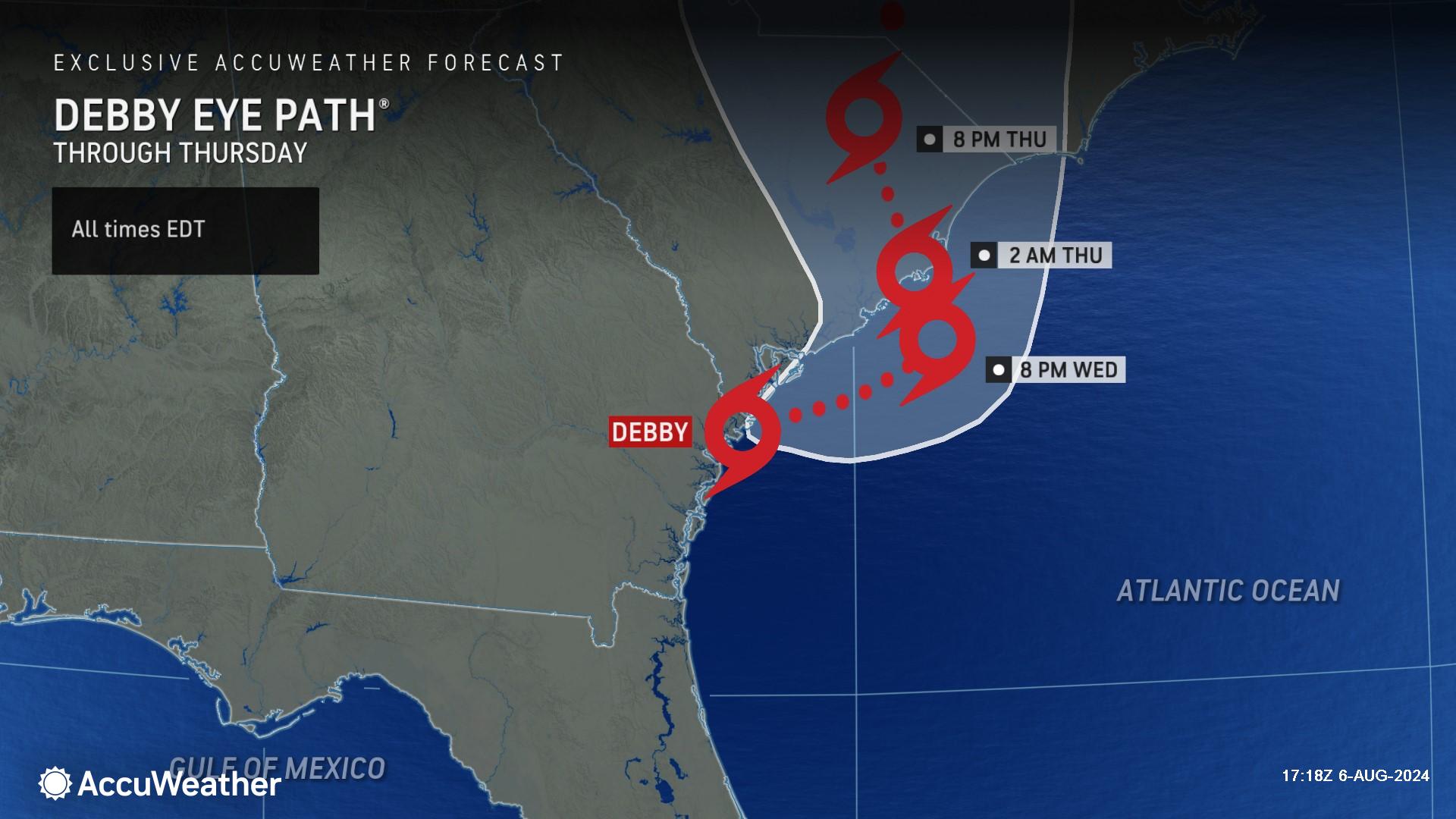
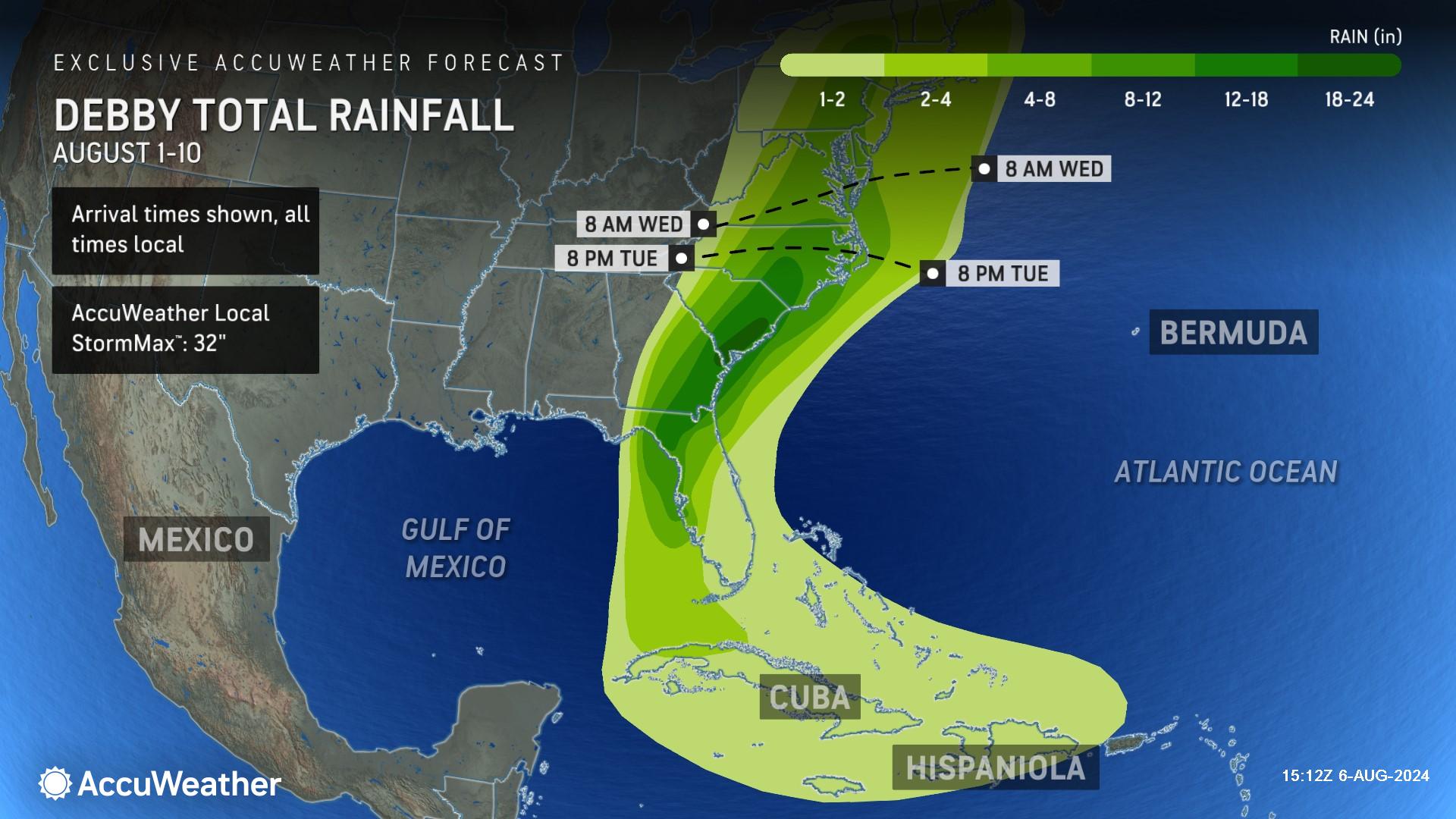
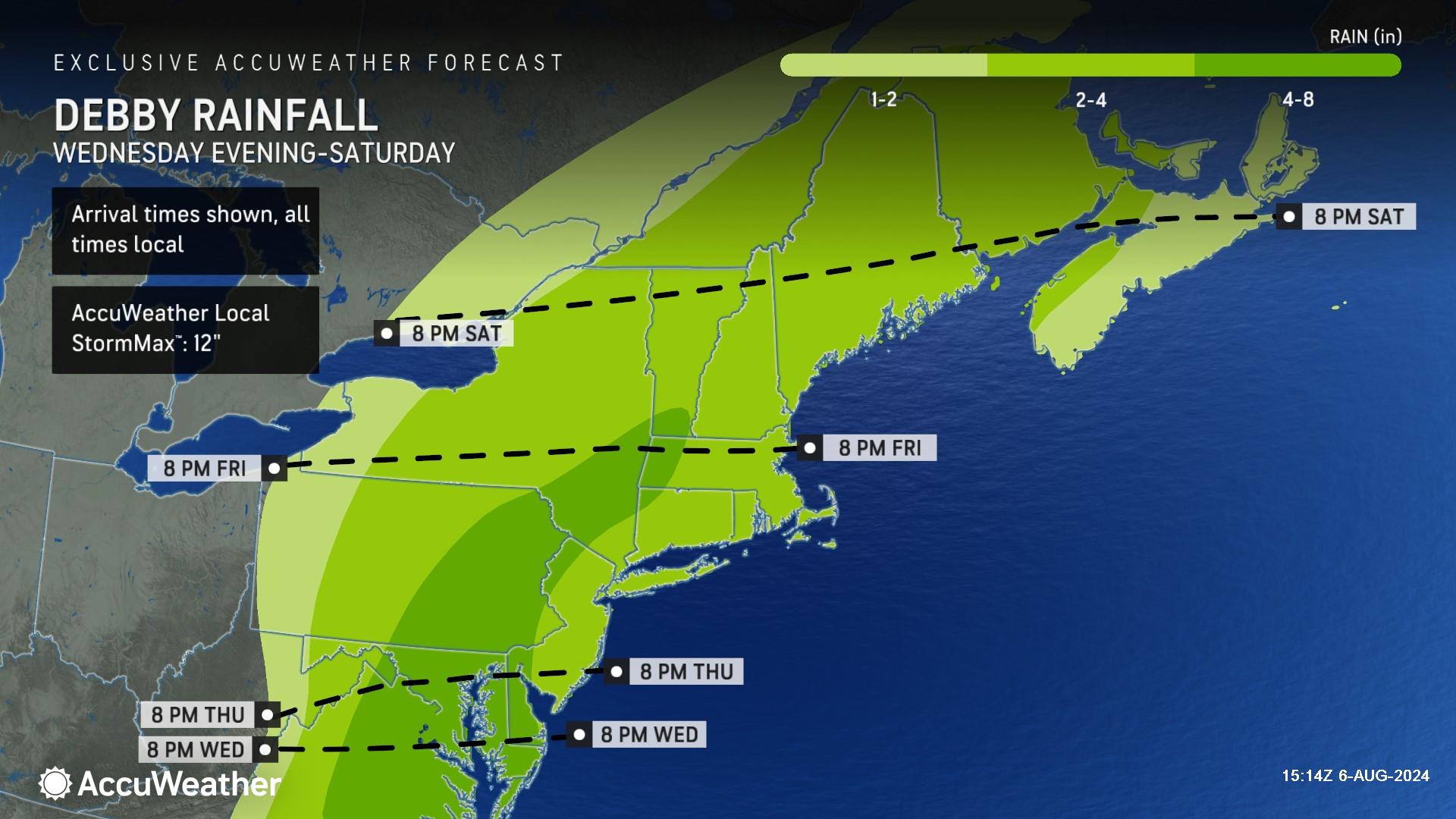
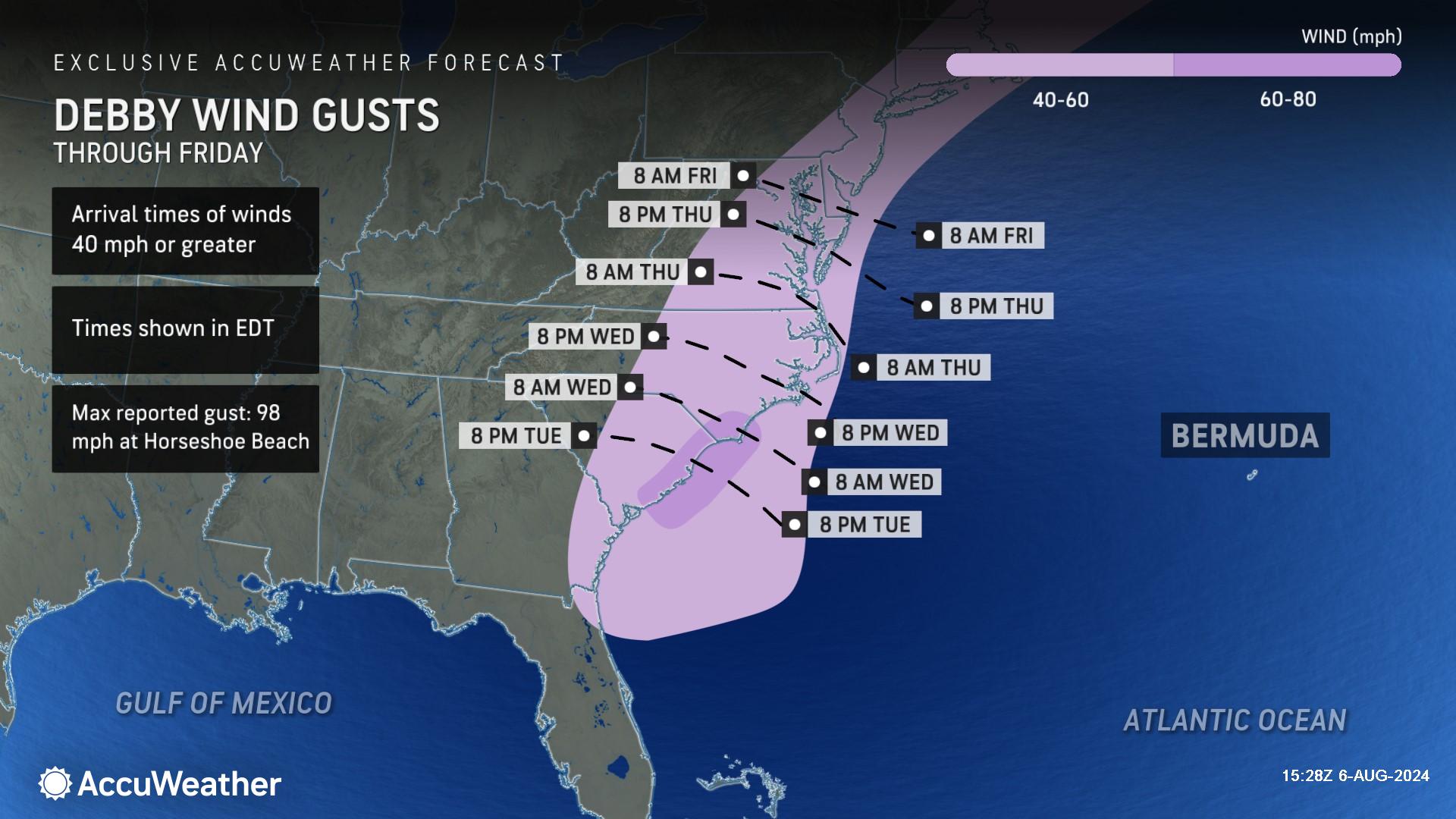

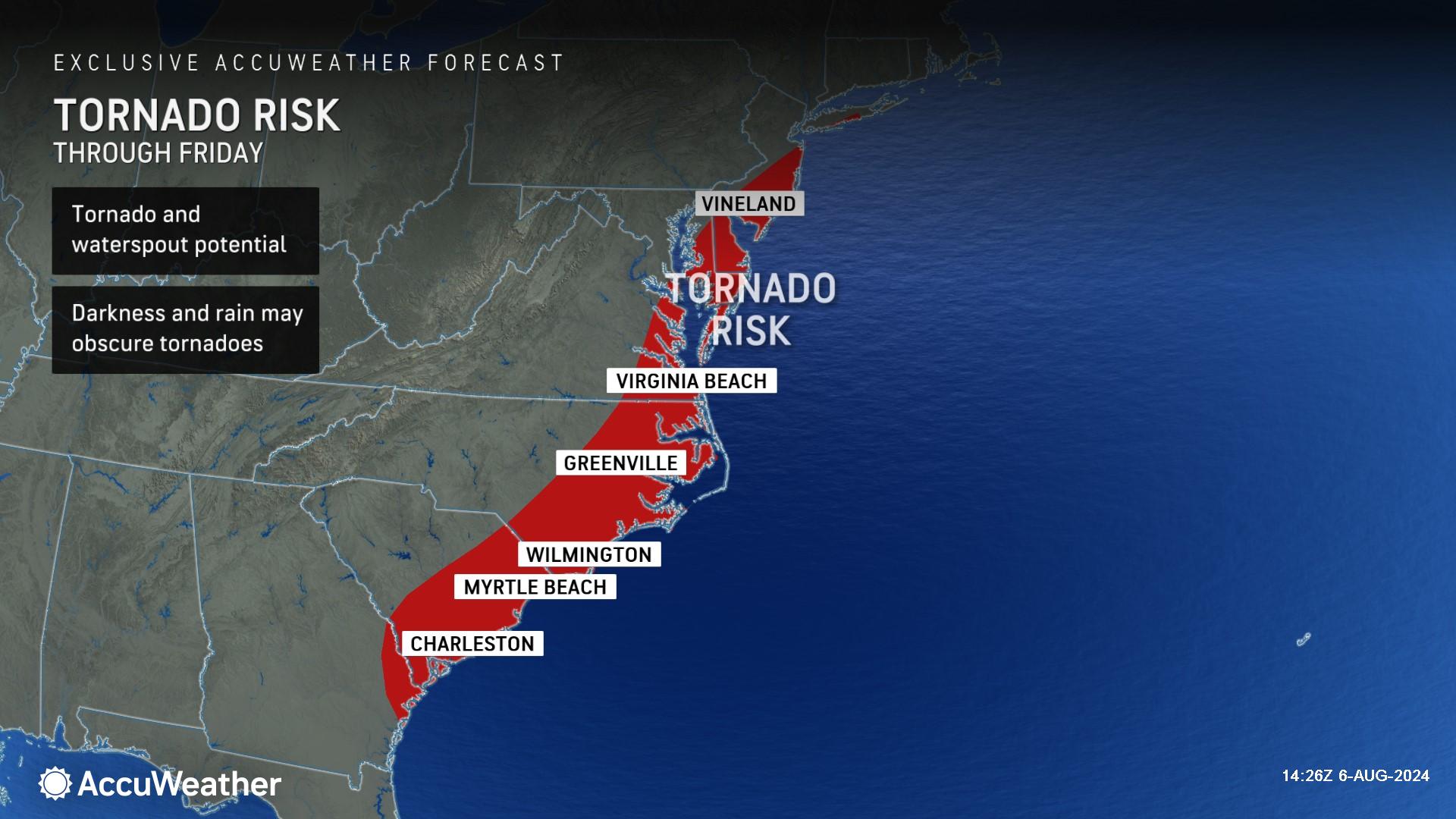
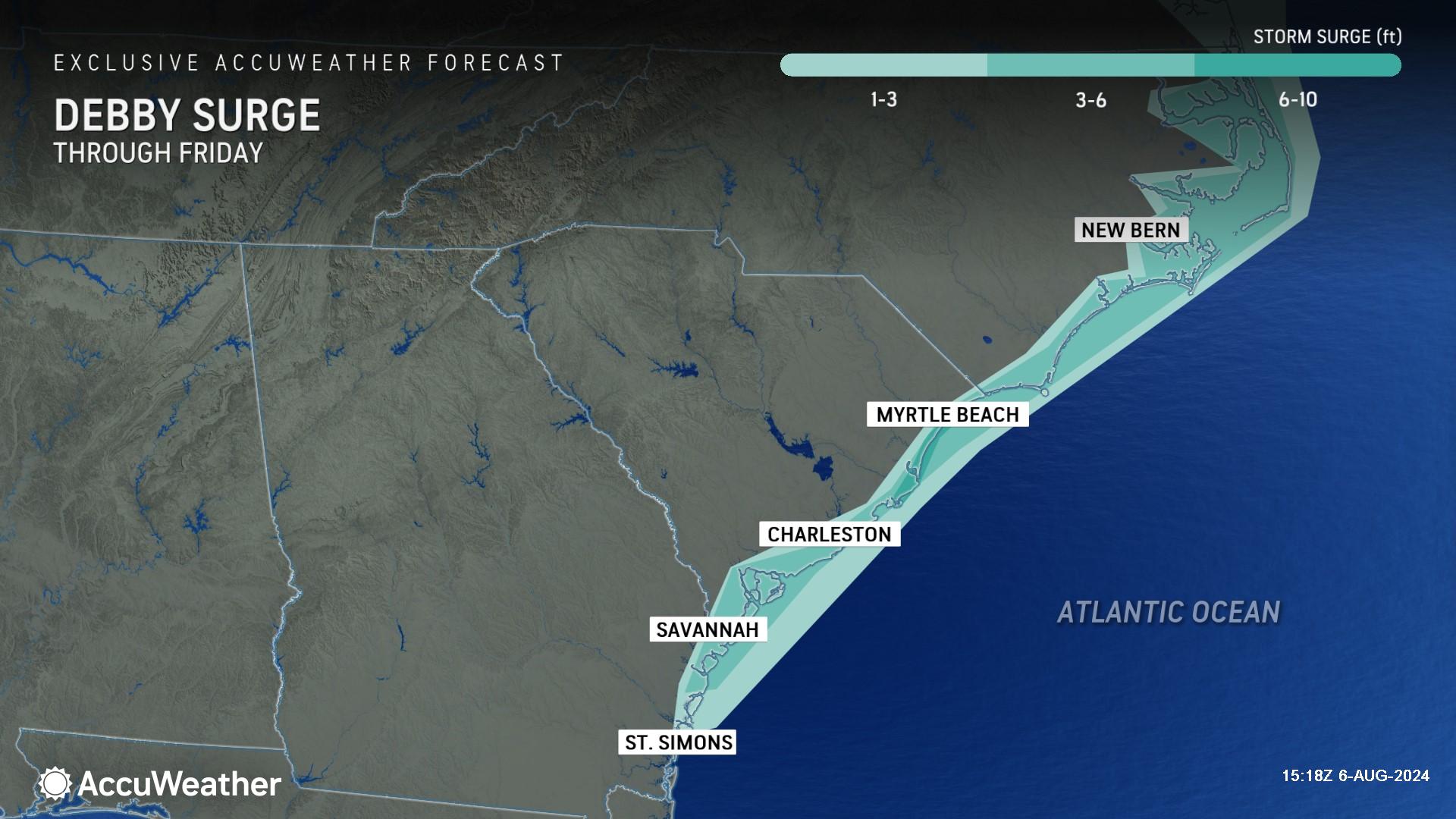
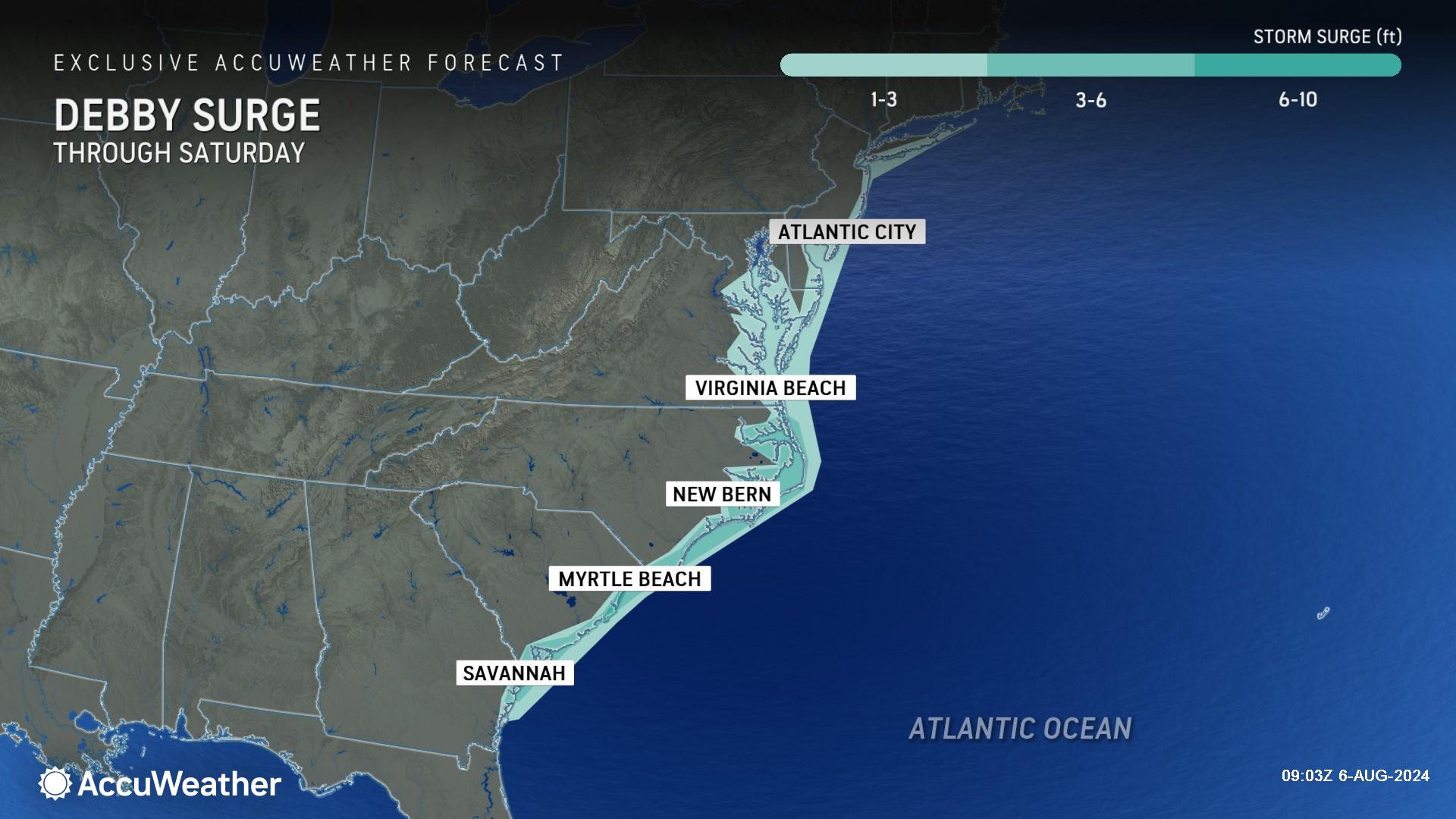
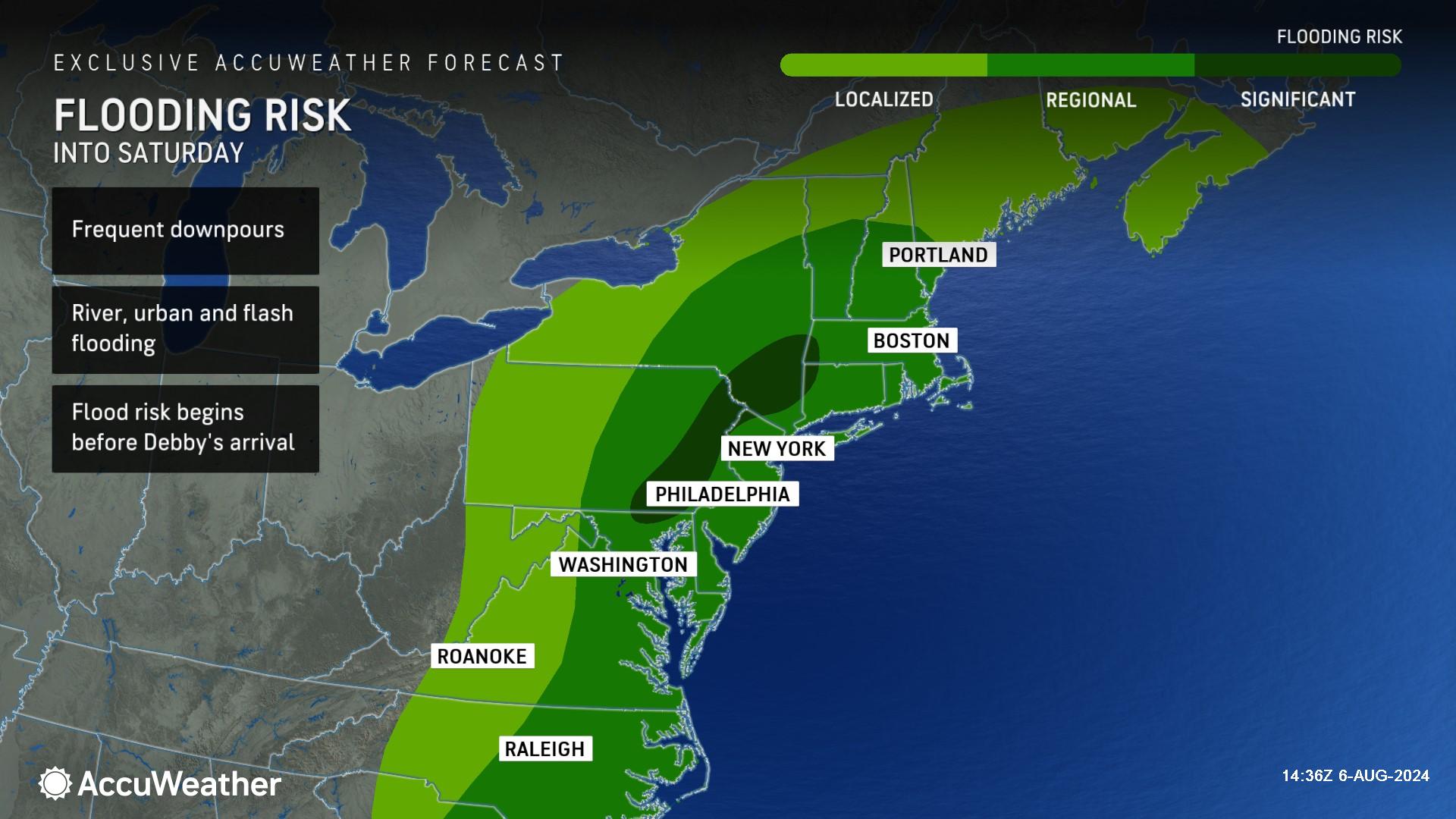

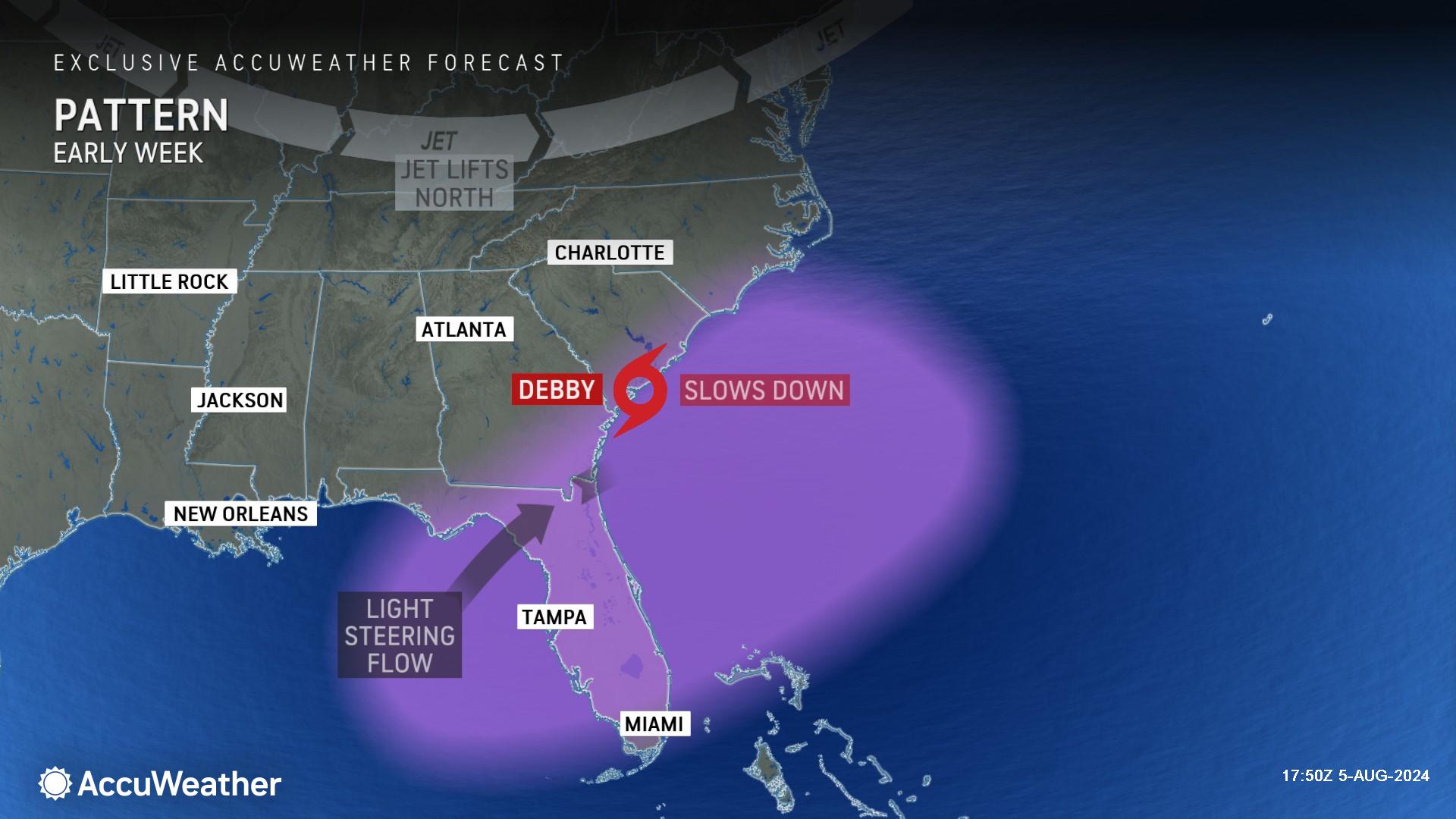

Additional AccuWeather Resources:
Debby to impact Georgia, Carolinas with life-threatening flooding and storm surge this week
Deadly Debby leaves 5 dead, spreads flooding inland into Southeast
AccuWeather Hurricane Tracking & Storm Radar
Hurricane season: AccuWeather's guide for first-timers
How to use a generator safely after a hurricane strikes
AccuWeather Forecasts Explosive 2024 Hurricane Season
Rapidly Intensifying Hurricanes Near Coastline Pose Major Threat To US This Season



